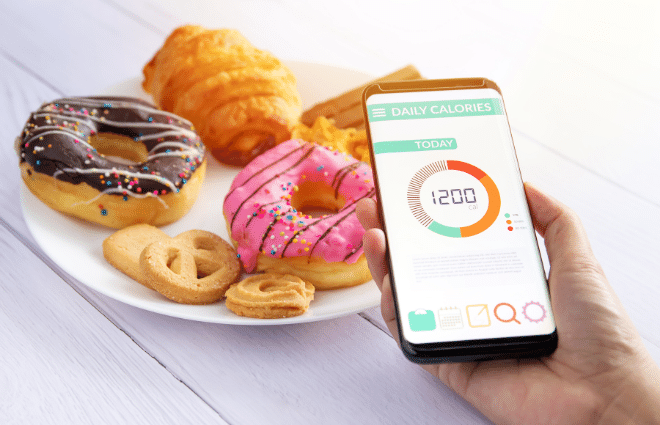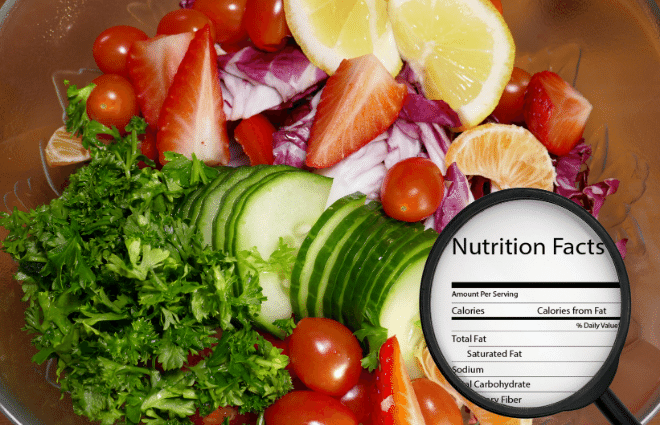How Many Calories for Weight Loss? (The Most Accurate TDEE Calculator)
Having the most accurate TDEE calculator in your bag of weight loss tricks could be the key to losing those last few stubborn pounds. But what is a TDEE calculator and how can it actually help you kick the extra weight?
A TDEE calculator measures your Total Daily Energy Expenditure. What this means is it calculates how many calories you burn in a day when exercise is taken into account.
While you can easily lose weight without counting calories, it can still help to have an idea of how many calories you should be consuming.
Calories are just units of energy consumed when we eat, and we need to burn more than we consume if we want to lose weight.
So, how can a TDEE calculator help with that?
Before we get to the answer, you first need to understand how your TDEE is calculated.
This post may contain affiliate links, which helps keep this content free. Please read our disclosure for more info.
How TDEE is Calculated

The first number you need is your Basal Metabolic Rate, or BMR. This number is how many calories your body burns while at rest.
The best place to find out your BMR is in a lab either with a nutritionist, at a health center, or with your primary care physician during a physical.
However, you can avoid the fee, and still get a pretty accurate calculation of your BMR here.
Or you can do the math yourself using this equation we found from Everyday Health:
Men: 66 + (6.23 x weight in pounds) + (12.7 x height in inches) – (6.8 x age in years).
For example, if you’re 170 pounds, 5’11”, and 43, your BMR is 66 + (6.23 x 170) + (12.7 x 71) – (6.8 x 43) = 1,734.4 calories
Women: 655 + (4.35 x weight in pounds) + (4.7 x height in inches) – (4.7 x age in years).
For example, if you’re 130 pounds, 5’3”, and 36, your BMR is 665 + (4.35 x 130) + (4.7 x 63) – (4.7 x 36) = 1,357.4 calories
Once you have your BMR, you multiply it by an activity multiplier to ultimately achieve your TDEE.
According to a report from Kansas State University, the activity multiplier looks like this:
Sedentary = BMR x 1.2 (little or no exercise, desk job)
Lightly active = BMR x 1.375 (light exercise/ sports 1-3 days/week)
Moderately active = BMR x 1.55 (moderate exercise/ sports 6-7 days/week)
Very active = BMR x 1.725 (hard exercise every day, or exercising 2 xs/day)
Extra active = BMR x 1.9 (hard exercise 2 or more times per day, or training for a marathon, or triathlon, etc.
If you LOVE doing math, use these formulas, and calculate till your heart’s content! Or if you are more like us, hit that easy button and choose an online calculator to do the math for you.
The most accurate online TDEE calculator we’ve found is the one from Healthy Eater.
Do yourself a favor and enter your information into the calculator honestly.
After all, if weight loss is your goal, you are doing yourself a disservice if you exaggerate your activity levels and/or current weight in the questionnaire.
Also, see our post the 5 Most Accurate Weight Loss Calculators on the Internet.
What Can You Do With Your TDEE Calculation?
As KSU explains, once you have your TDEE “this is the total calories you could eat every day if you wanted to maintain your weight.”

If weight loss is your goal, “you would either have to consume fewer calories every day, increase your activity level, or do both.”
It’s time to make a game plan!
Armed with that information, you can now make changes to your daily activities or diet to break through your weight loss plateau and finally reach your goal.
Of course, this is not to say that changing the number of calories you consume alone is the only way to lose weight.
Not all calories are created equal, after all.
You need healthy calories in your diet to achieve your weight loss goals. This is because each item you eat acts differently in your body.
For example, let’s say you eat a medium-sized chocolate doughnut that is 195 calories for breakfast.
In less than 30 minutes you’ll likely want something to eat again. This is because the treat spiked your blood sugar levels (which makes your hungrier), and didn’t provide your body with any nutrients.
If instead, you’d opted for a bowl of oatmeal topped with fruit, you still would have consumed about the same amount of calories, but your body would have enjoyed 4 grams of fiber and 6 grams of protein.
This would have taken longer to digest, keeping you full longer.
You Can Still Lose Weight Without too Much Activity
While it’s true that you need to burn more calories than you consume to lose weight, you don’t HAVE to actually count the calories to lose weight.
If you eat the right foods, you don’t have to worry about it.
Our 21-Day Fat Loss Challenge is the diet program for women that gives you a step-by-step plan for eating your way to weight loss.

Our challenge provides a step-by-step guide that can help you lose up to 21 pounds in 21 days, and it can be repeated as many times as you want if you have more weight to lose.
Plus, our methods get your body, mindset and digestive system in balance so you actually keep the weight off!
The best part? You don’t even have to exercise to lose weight with the 21-Day Fat Loss Challenge.
Tons of our clients have turned it into a lifestyle diet and have lost as much as over 100 pounds with the diet!
Your journey to a healthier, slimmer you can begin right now, with less effort than you may think!
Read stories from our clients, learn more, and start your challenge today!

